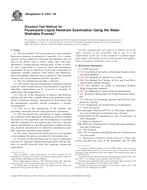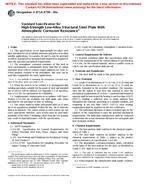1.1 This guide is intended to determine the relative environmental influence of new munition constituents, consistent with the research and development (R&D) level of effort and is intended to be applied in a logical, tiered manner that parallels both the available funding and the stage of research, development, testing, and evaluation. Specifically, conservative assumptions, relationships, and models are recommended early in the research stage, and as the munition technology is matured, empirical data will be developed and used. Munition constituents may include fuels, oxidizers, explosives, binders, stabilizers, metals, dyes, and other compounds used in the formulation to produce a desired effect. Munition systems range from projectiles, grenades, rockets/missiles, training simulators, smokes and obscurants. Given the complexity of issues involved in the assessment of environmental fate and effects and the diversity of the munition systems used, this guide is broad in scope and not intended to address every factor that may be important in an environmental context. Rather, it is intended to reduce uncertainty at minimal cost by considering the most important factors related to the environmental impacts of energetic materials. This guide provides a method for collecting data useful in a relative ranking procedure to provide the munition scientist with a sound basis for prospectively determining a selection of candidates based on environmental and human health criteria.
Product Details
- Published:
- 10/01/2014
- Number of Pages:
- 8
- File Size:
- 1 file , 130 KB


